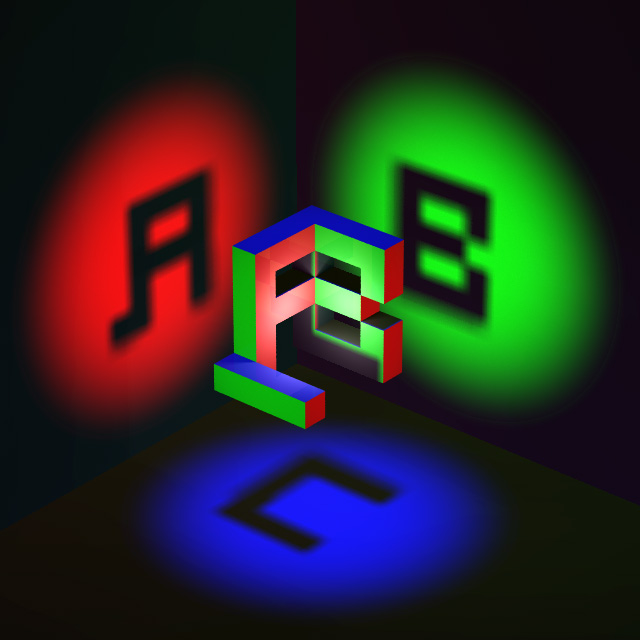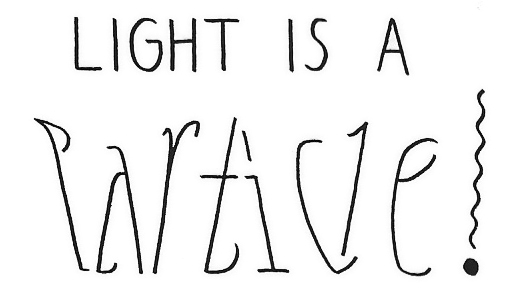Ambigrams are exercises in graphic design that play with optical illusions, symmetry and visual perception. Some ambigrams feature a relationship between their form and their content. Ambigrams usually fall into one of several categories:
Rotational
A design that presents several instances of words when rotated through a fixed angle. This is usually 180 degrees, but rotational ambigrams of other angles exist, for example 90 or 45 degrees. The word spelled out from the alternative direction(s) is often the same, but may be a different word to the initially presented form. A simple example is the lower-case abbreviation for "Down", dn, which looks like the lower-case word up when rotated 180 degrees.
Mirror-image
A design that can be read when reflected in a mirror, usually as the same word or phrase both ways. Ambigrams that form different words when viewed in the mirror are also known as glass door ambigrams, because they can be printed on a glass door to be read differently when entering or exiting.
Figure-ground
A design in which the spaces between the letters of one word form another word.
Chain
A design where a word (or sometimes words) are interlinked, forming a repeating chain. Letters are usually overlapped meaning that a word will start partway through another word. Sometimes chain ambigrams are presented in the form of a circle.
Space-filling
Similar to chain ambigrams, but tile to fill the 2-dimensional plane.
Spinonym
An ambigram in which all the letters are made of the same glyph, possibly rotated and/or inverted. WEB is an example of a word that can easily be made into a spinonym.
Fractal
A version of space-filling ambigrams where the tiled word branches from itself and then shrinks in a self-similar manner, forming a fractal. See Scott Kim's fractal of the word TREE for an animated example.
3-dimensional
A design where an object is presented that will appear to read several letters or words when viewed from different angles. Such designs can be generated using constructive solid geometry.
Perceptual shift (also called an oscillation)
A design with no symmetry but can be read as two different words depending on how the curves of the letters are interpreted.
Natural
A natural ambigram is a word that possesses one or more of the above symmetries when written in its natural state, requiring no typographic styling. For example, the words "dollop", "suns" and "pod" form natural rotational ambigrams. In some fonts, the word "swims" forms a natural rotational ambigram. The word "bud" forms a natural mirror ambigram when reflected over a vertical axis. The words "CHOICE" and "OXIDE", in all capitals, form natural mirror ambigrams when reflected over a horizontal axis. The word "TOOTH", in all capitals, forms a natural mirror ambigram when its letters are stacked vertically and reflected over a vertical axis.
Symbiotogram
An ambigram that, when rotated 180 degrees, can be read as a different word to the original.citation needed
Multi-lingual
An ambigram that can be read one way in one language and another way in a different language. Multi-lingual ambigrams can exist in all of the various styles of ambigrams, with multi-lingual perceptual shift ambigrams being particularly striking.
Ambigraf
A style of ambigrams which abide by the conventions of ambigrams but are designed in the graffiti style in terms of line and shape- and context- written on walls as stencils. It is an artform developed by artist SlantOne.citation needed
edit Creating ambigrams
There are no universal guidelines for creating ambigrams. Ambigrammists have different ways of approaching problems. A number of ambigrammists have published information on the methods they use. Langdon's WordPlay and Burkhard Polster's Eye Twisters, in particular, contain information useful to new ambigrammists.
There have been a few attempts at automated creation of ambigrams, two of which have been available on the Internet. The first, the letter-based ambigram generator Ambigram.matic, was created in 1996 by David Holst, using a database of 351 letter glyphs, in which each letter mapped to another letter. The generator could only map a word to itself or to another word that was the same length. Because of this, most of the generated ambigrams were of poor quality.
The second generator, the Glyphusion generator, is used by FlipScript (a web retailer of personalized ambigram products) and other companies, and was created in 2007. According to the company, the Glyphusion generator uses a database of more than 200,000 parts of letters. Because the generator uses parts of letters, its results are significantly better than the earlier letter-based generator, but is still limited when compared with a human artist. It currently (2009) generates ambigrams in two lettering styles (blackletter and a cursive blackletter) and it cannot produce ambigrams in some cases.
spottt
Categories
- Softwares (65)
- movies (56)
- games (38)
- music releases (23)
- Make Money from here (19)
- E-book (17)
- Cell Phones (13)
- Ambigram (12)
- Naruto (11)
- New Technology (10)
- mobile games (10)
- Song Lyrics (8)
- Music Karoke (6)
- Oscar nominated Movies(2008) (6)
- Crazy Gadgets (5)
- Softwares for GRE takers (5)
- WWE (5)
- E-books on GRE (4)
- Prison Break (4)
- Paintings (3)
- Disclaimer (1)
- Loose weight from here (1)
- Media player (1)
- ptc sites (1)





















Post a Comment